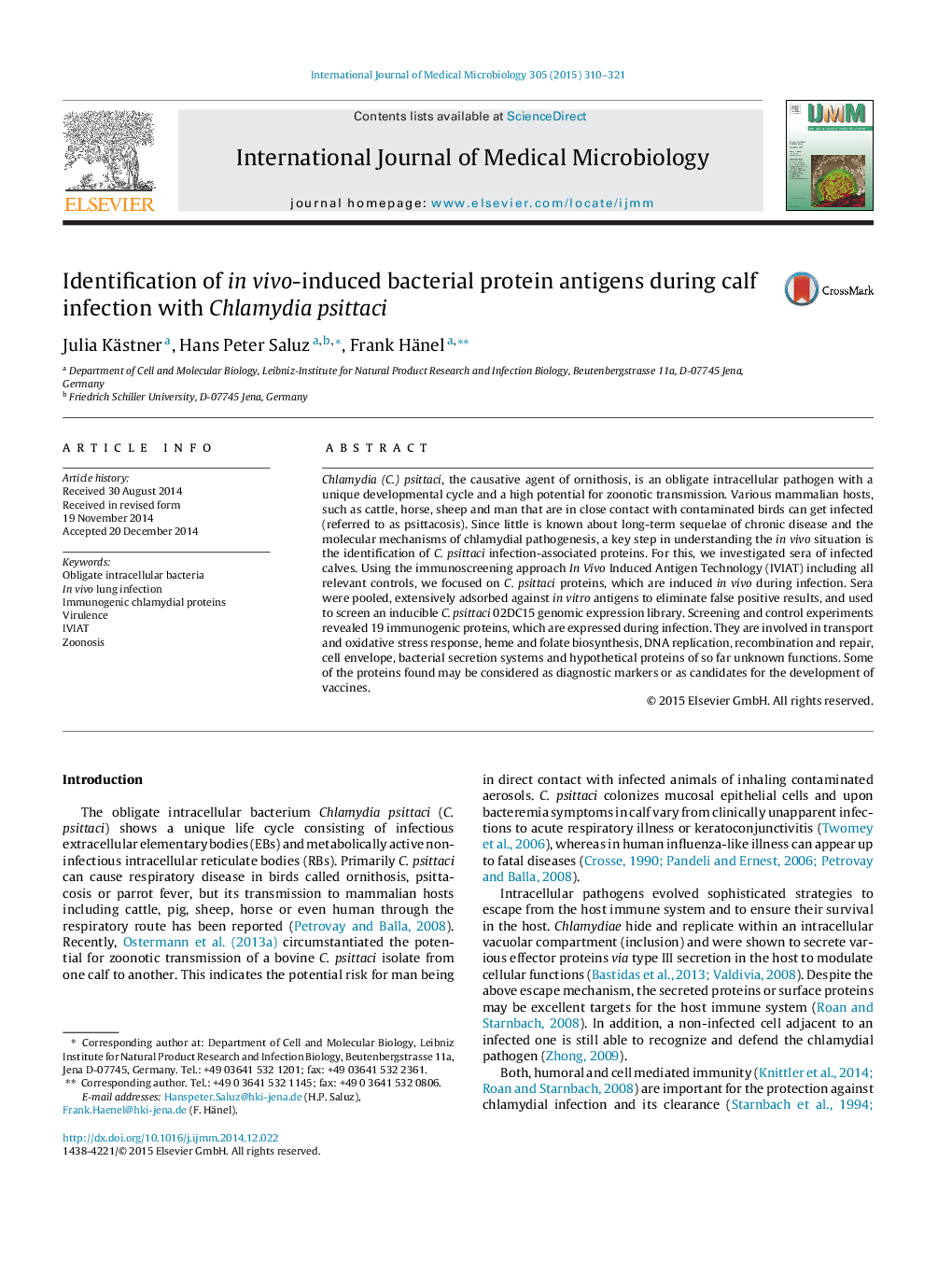| Article ID | Journal | Published Year | Pages | File Type |
|---|---|---|---|---|
| 8385169 | International Journal of Medical Microbiology | 2015 | 12 Pages |
Abstract
Chlamydia (C.) psittaci, the causative agent of ornithosis, is an obligate intracellular pathogen with a unique developmental cycle and a high potential for zoonotic transmission. Various mammalian hosts, such as cattle, horse, sheep and man that are in close contact with contaminated birds can get infected (referred to as psittacosis). Since little is known about long-term sequelae of chronic disease and the molecular mechanisms of chlamydial pathogenesis, a key step in understanding the in vivo situation is the identification of C. psittaci infection-associated proteins. For this, we investigated sera of infected calves. Using the immunoscreening approach In Vivo Induced Antigen Technology (IVIAT) including all relevant controls, we focused on C. psittaci proteins, which are induced in vivo during infection. Sera were pooled, extensively adsorbed against in vitro antigens to eliminate false positive results, and used to screen an inducible C. psittaci 02DC15 genomic expression library. Screening and control experiments revealed 19 immunogenic proteins, which are expressed during infection. They are involved in transport and oxidative stress response, heme and folate biosynthesis, DNA replication, recombination and repair, cell envelope, bacterial secretion systems and hypothetical proteins of so far unknown functions. Some of the proteins found may be considered as diagnostic markers or as candidates for the development of vaccines.
Related Topics
Life Sciences
Biochemistry, Genetics and Molecular Biology
Biochemistry, Genetics and Molecular Biology (General)
Authors
Julia Kästner, Hans Peter Saluz, Frank Hänel,
